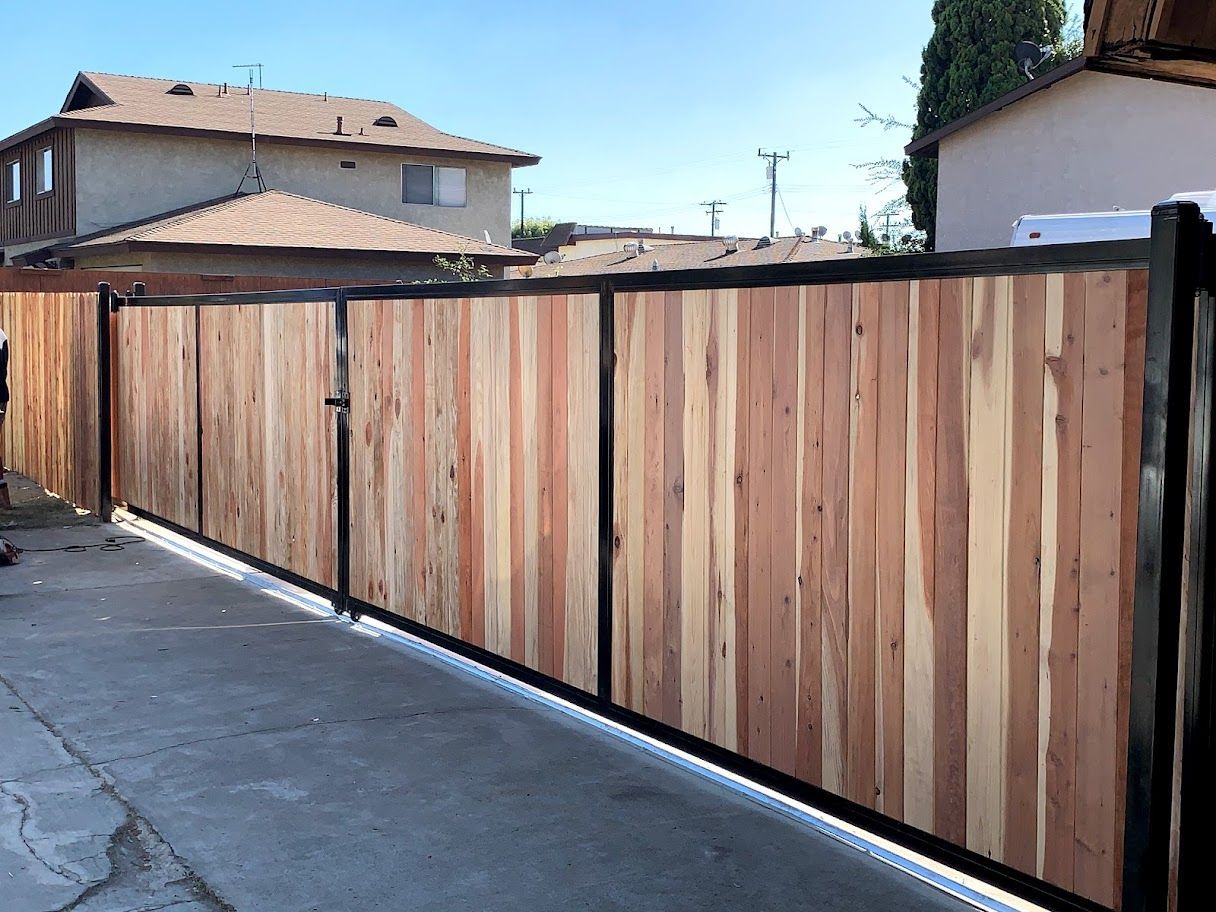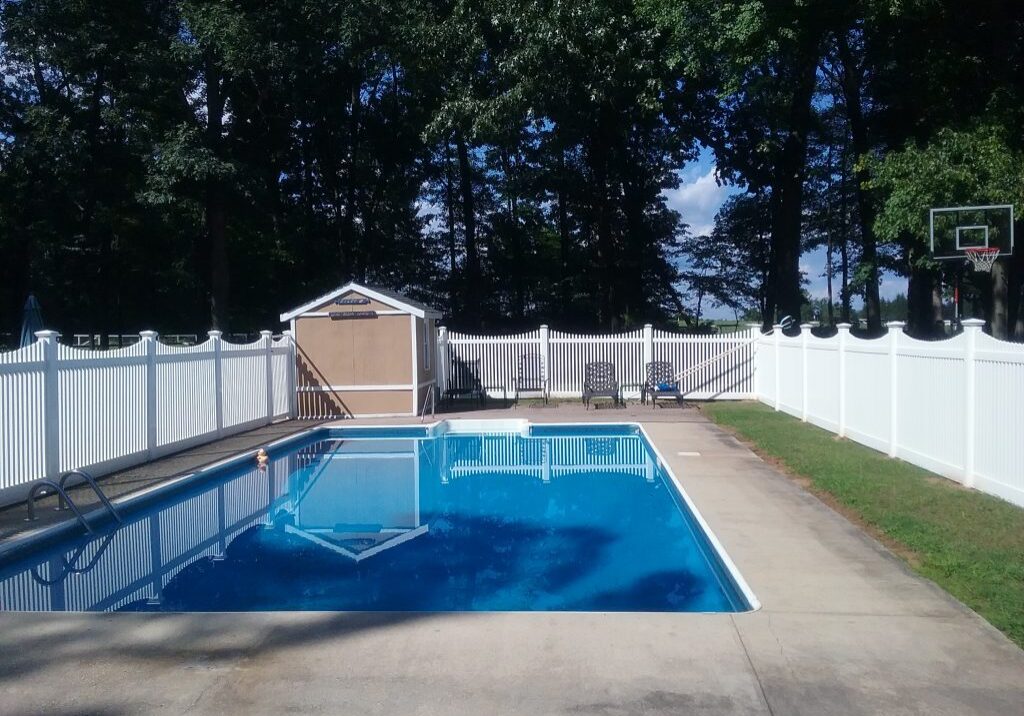All Categories
Featured
Fencings are essential frameworks that supply personal privacy, safety, and aesthetic attract your residential or commercial property. They are also exposed to the components and can experience damages from weather problems like rainfall, sun, snow, and wind. Whether you have a wood, plastic, steel, or composite fencing, taking steps to safeguard it from the weather condition will certainly prolong its life and preserve its look. Right here are several ways you can safeguard your fence from weather-related damage.
![]()
Wooden Fences: Wood is susceptible to rot, warping, and insect infestations when subjected to moisture. If you pick a wood fence, pick products like cedar or redwood, which are normally much more immune to the elements. Additionally, go with pressure-treated wood, which has been chemically dealt with to withstand rot and pests. Plastic Fences: Plastic fences are very immune to the components. They will not rot, warp, or split like timber, and they are unsusceptible to insect damage. Vinyl is also UV-resistant, so it doesn't discolor in the sun as promptly as other products. Metal Fencings: Wrought iron and aluminum fencings are immune and resilient to most climate condition. Nevertheless, metal can corrosion if revealed to moisture for prolonged periods. Ensure it is galvanized or powder-coated to avoid rusting if you have a steel fence. Compound Fences: Composite fences combine wood fibers and plastic, offering the look of wood with enhanced sturdiness. They are resistant to rot, insects, and fading, making them a great option for areas with extreme climate conditions. 2. Apply Safety Coatings and Sealants. Applying safety layers to your fence can protect against dampness and UV damage, substantially prolonging its lifespan.
Wood Fences: To shield wood from dampness and UV rays, apply a top quality tarnish or sealer. Make sure to reapply the stain or sealer every couple of years, depending on the climate and the problem of the fence. Vinyl Fences: Although vinyl fences are highly durable, they can still discolor in time as a result of UV exposure. You can apply a UV protectant to maintain your plastic fencing looking like brand-new. Furthermore, regular cleaning with a vinyl-safe cleaner can assist avoid staining and staining. Steel Fences: Metal fences, particularly those made from iron or steel, can rust with time. A rust-resistant primer adhered to by a coat of weather-resistant paint will help safeguard against corrosion. For included defense, take into consideration powder finish, which offers a resilient, resilient surface that resists corrosion and scrapes. 3. Routine Cleansing and Upkeep. Keeping your fence clean and properly maintained is among the most effective methods to avoid weather-related damage.
Wooden Fencings: Dirt, particles, and mold can accumulate on wooden fencings over time. Regular cleaning with a moderate soap solution or pressure washing machine can help prevent the buildup of grime. Make sure to inspect the wood for signs of damages such as rot or splitting and address issues quickly. Vinyl Fences: Plastic fencings are low-maintenance, but they can collect dust, leaves, and other particles. To clean a vinyl fence, just hose it down or clean it with soapy water. For tougher discolorations, utilize a soft towel with a vinyl-safe cleanser. Metal Fencings: Metal fences can collect dust, corrosion, and dust, specifically after a tornado. Clean the fencing routinely utilizing a non-abrasive towel and mild soap. Get rid of any type of rust quickly with a wire brush or corrosion eliminator to stop it from spreading. 4. Mount a Fencing Base Protector. For fences exposed to hefty rain or snow, setting up a fence base protector can prevent dampness from passing through all-time low of your fence articles. This is specifically crucial for wood and composite fencings, as water exposure at the base of the fence can cause decaying or degeneration.
Along with base guards, take into consideration making use of gravel or a moisture-resistant barrier around all-time low of wood articles. This will enable water to drain pipes away from the base of the articles and decrease the threat of rot.
![]()
On a regular basis trim back plants and trees that are near the fence. This will aid keep the fencing completely dry, prevent undesirable pressure on the structure, and ensure that air circulates around the articles.
For metal fences, evaluate for rust before the cold weather and deal with any afflicted areas. You can likewise apply a safety layer to stop snow and ice from triggering deterioration.
![]()
Verdict. Protecting your fencing from weather-related damage is crucial to guaranteeing its long life and efficiency. By selecting the appropriate products, using protective finishings, maintaining your fence clean, and taking proactive upkeep steps, you can prevent several of the common concerns that arise from direct exposure to the components. Whether you have a wooden, vinyl, steel, or composite fencing, these actions will aid safeguard your financial investment and maintain your fencing looking terrific for years to come.

- Pick Weather-Resistant Products. The material of your fencing plays a considerable role in its ability to endure various climate problems. Picking a material that suits your climate can assist reduce weather-related damage.
Wooden Fences: Wood is susceptible to rot, warping, and insect infestations when subjected to moisture. If you pick a wood fence, pick products like cedar or redwood, which are normally much more immune to the elements. Additionally, go with pressure-treated wood, which has been chemically dealt with to withstand rot and pests. Plastic Fences: Plastic fences are very immune to the components. They will not rot, warp, or split like timber, and they are unsusceptible to insect damage. Vinyl is also UV-resistant, so it doesn't discolor in the sun as promptly as other products. Metal Fencings: Wrought iron and aluminum fencings are immune and resilient to most climate condition. Nevertheless, metal can corrosion if revealed to moisture for prolonged periods. Ensure it is galvanized or powder-coated to avoid rusting if you have a steel fence. Compound Fences: Composite fences combine wood fibers and plastic, offering the look of wood with enhanced sturdiness. They are resistant to rot, insects, and fading, making them a great option for areas with extreme climate conditions. 2. Apply Safety Coatings and Sealants. Applying safety layers to your fence can protect against dampness and UV damage, substantially prolonging its lifespan.
Wood Fences: To shield wood from dampness and UV rays, apply a top quality tarnish or sealer. Make sure to reapply the stain or sealer every couple of years, depending on the climate and the problem of the fence. Vinyl Fences: Although vinyl fences are highly durable, they can still discolor in time as a result of UV exposure. You can apply a UV protectant to maintain your plastic fencing looking like brand-new. Furthermore, regular cleaning with a vinyl-safe cleaner can assist avoid staining and staining. Steel Fences: Metal fences, particularly those made from iron or steel, can rust with time. A rust-resistant primer adhered to by a coat of weather-resistant paint will help safeguard against corrosion. For included defense, take into consideration powder finish, which offers a resilient, resilient surface that resists corrosion and scrapes. 3. Routine Cleansing and Upkeep. Keeping your fence clean and properly maintained is among the most effective methods to avoid weather-related damage.
Wooden Fencings: Dirt, particles, and mold can accumulate on wooden fencings over time. Regular cleaning with a moderate soap solution or pressure washing machine can help prevent the buildup of grime. Make sure to inspect the wood for signs of damages such as rot or splitting and address issues quickly. Vinyl Fences: Plastic fencings are low-maintenance, but they can collect dust, leaves, and other particles. To clean a vinyl fence, just hose it down or clean it with soapy water. For tougher discolorations, utilize a soft towel with a vinyl-safe cleanser. Metal Fencings: Metal fences can collect dust, corrosion, and dust, specifically after a tornado. Clean the fencing routinely utilizing a non-abrasive towel and mild soap. Get rid of any type of rust quickly with a wire brush or corrosion eliminator to stop it from spreading. 4. Mount a Fencing Base Protector. For fences exposed to hefty rain or snow, setting up a fence base protector can prevent dampness from passing through all-time low of your fence articles. This is specifically crucial for wood and composite fencings, as water exposure at the base of the fence can cause decaying or degeneration.
Along with base guards, take into consideration making use of gravel or a moisture-resistant barrier around all-time low of wood articles. This will enable water to drain pipes away from the base of the articles and decrease the threat of rot.

- Trim Plant Life Around Your Fence. Bushes, trees, and plants growing too near your fence can cause substantial weather-related damages. Thick greenery can trap wetness against the fence, promoting rot and mold and mildew development. In addition, tree roots can push versus fencing messages, creating them to change or crack.
On a regular basis trim back plants and trees that are near the fence. This will aid keep the fencing completely dry, prevent undesirable pressure on the structure, and ensure that air circulates around the articles.
- Prepare Your Fence for Winter months. In regions with chilly winter seasons, freezing temperatures and ice can be especially harming to wood fencings. Water that enters the wood can ice up, triggering cracks and splits. To stop this, ensure that your wood fencing posts are effectively sealed and raised above the ground to stop water from collecting at the base.
For metal fences, evaluate for rust before the cold weather and deal with any afflicted areas. You can likewise apply a safety layer to stop snow and ice from triggering deterioration.

- Post-Storm Upkeep. After a hefty tornado, check your fencing for any kind of signs of damages, such as loosened articles, bent panels, or debris lodged in between slats. Also minor damages ought to be repaired swiftly to avoid additional degeneration. Reinforce weak areas and replace damaged areas as soon as feasible to maintain its architectural honesty. if your fencing has been harmed by a tornado.
Verdict. Protecting your fencing from weather-related damage is crucial to guaranteeing its long life and efficiency. By selecting the appropriate products, using protective finishings, maintaining your fence clean, and taking proactive upkeep steps, you can prevent several of the common concerns that arise from direct exposure to the components. Whether you have a wooden, vinyl, steel, or composite fencing, these actions will aid safeguard your financial investment and maintain your fencing looking terrific for years to come.
Latest Posts
Encouraging Young people with WyHy's Financial Tools
Published Apr 19, 25
1 min read
Boost Your Home with Automatic Gates
Published Apr 19, 25
1 min read
About Us: Learn More The Services at Montclare Auto Repair and Our Trusted Solutions
Published Apr 19, 25
2 min read